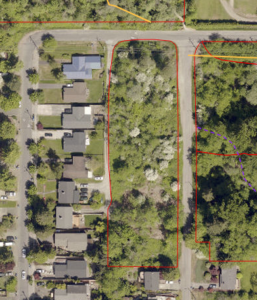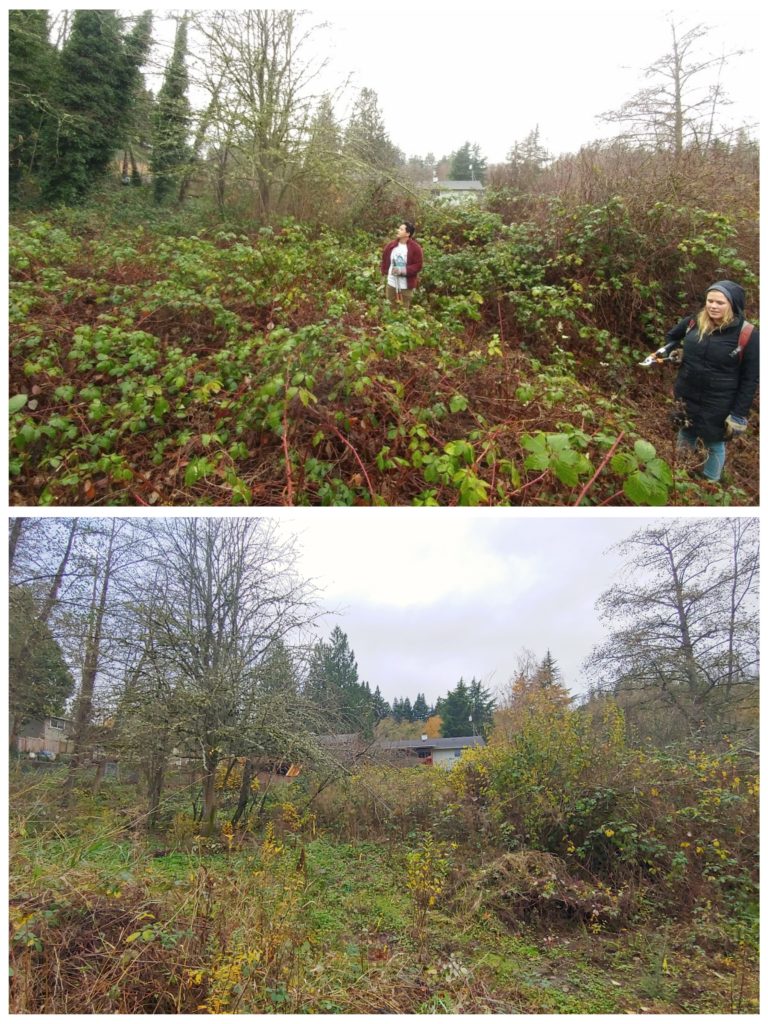Park Profile: Longfellow Creek 01
Life is a lot quieter this year as Seattle works and shelters at home. One notable exception is public parks and other outdoor spaces, which have for many become a valuable escape from the indoors. This has led public health officials to warn about large parks becoming overcrowded, and in some cases being closed during high-traffic times. With all that in mind, we’re putting together a series of posts on our lesser-known local parks!
When we began our series of park profiles, we focused on restoration sites that are particularly well-suited to the day user; parks like Thistle Street Greenspace and Soundway are crossed with walking trails. As we’ve restarted our volunteer program, we’ve also been spending a lot of time working at some of the other natural areas. Today, we’re looking at a site with no walking trails whatsoever but plenty to do for the local restoration practitioner.
Along Longfellow Creek is a series of natural areas, bound on the north end by SW Brandon Street and on the south end by Sylvan Way SW. Bearing the not-very-evocative name Longfellow Creek Central Forest, this collection of upland greenspaces is nonetheless an important resource for protecting the health of one of the only tributaries to the Duwamish River still receiving spawning salmon. Our restoration work currently focuses on two zones within the Central Forest, 01 and 05 (in keeping with the humdrum naming scheme).
We began working at Longfellow Creek 01 at the start of 2018, and it has been a pleasure to watch the site develop! At scarcely over an acre, the site is too small for any hiking trails, and the thickets of blackberry and thorny, invasive English hawthorn would discourage public use anyway. Nevertheless, with the help of countless volunteers as well as a couple visits from the Natural Area Crews with the Green Seattle Partnership, the site is thriving! We have seen great survival of the young native plants, and repeated maintenance has drastically reduced the amount of invasive Himalayan blackberry present in the restoration zones. As the site continues to develop, the healthier native forest will do a better job of retaining and filtering water, clearing the air and providing better habitat for native animals.
One continuing issue in the area is illegal dumping. We have removed hundreds of pounds of trash from the site over the years and we continue to see household garbage abandoned near this site regularly. This is undesirable for many reasons. Dumping materials like paint and electronics can harm the natural environment, rotting garbage can attract nuisance animals, and the cleanup work poses health risks for our staff and our colleagues at the Parks Department and Seattle Public Utilities. Please dispose of trash properly!
A common question we get from volunteers is whether we can do anything to improve the soil on the site, which has high clay content and can be challenging to dig in. Clay soils are also prone to becoming compacted by people walking through the site. In truth, it is virtually impossible to change the type of soil found at a location. One workaround has been the use of wood chip mulch in higher-traffic areas and around the plants themselves. Not only does this protect the aeration and drainage of the soil, it’s a task that can be accomplished by even the smallest of volunteers!

Kindergartners from Louisa Boren STEM K-8 helped mulch the site during a series of volunteer events in 2019
We hope you found this profile informative and perhaps an enticement to join one of our volunteer events. Next month, we’ll continue exploring the Longfellow Creek Central Forest at another restoration site – let us know if there’s anything else you would like to learn!


